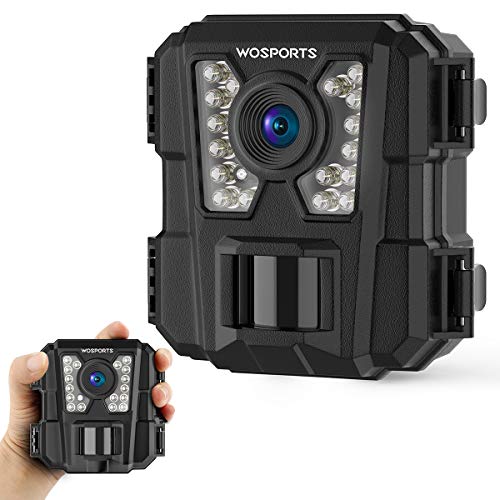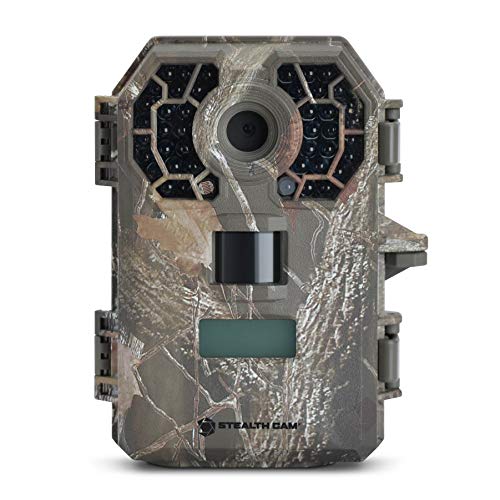How to Choose the Game & Trail Cameras
Everything You Need To Khow Before Choosing A Game & Trail Camera

- 1. Everything You Need To Khow Before Choosing A Game & Trail Camera
- 1.1. What are Game & Trail Cameras?
- 1.2. How do Game & Trail Cameras Work?
- 1.3. Applications of Game & Trail Cameras
- 1.3.1. Hunting
- 1.3.2. Wildlife Research
- 1.3.3. Nature Photography
- 2. Choosing the Right Game & Trail Camera
- 2.1. Purpose and Features
- 2.2. Additional Considerations
- 2.3. Budget
- 2.4. Research and Reviews
- 3. Ethical Considerations
- 4. Conclusion
In the world of wildlife enthusiasts and outdoor adventurers, game and trail cameras have become an indispensable tool. These compact devices have revolutionized the way we observe and study wildlife, providing us with a glimpse into the secret lives of animals in their natural habitats. Whether you are a hunter, a nature lover, or a wildlife researcher, game and trail cameras offer an unparalleled opportunity to capture the essence of the wild.
What are Game & Trail Cameras?
Game and trail cameras, also known as scouting cameras, are specialized devices designed to capture images or videos of wildlife in their natural environment. These cameras are typically weatherproof and equipped with motion sensors, allowing them to detect movement and trigger the capture of images or videos. They are commonly used for hunting, wildlife research, and nature photography.
How do Game & Trail Cameras Work?
Game and trail cameras are designed to be discreet and unobtrusive, blending seamlessly into the environment. They are usually mounted on trees, posts, or other stable structures, and their motion sensors are calibrated to detect any movement within their field of view. Once triggered, the camera captures high-resolution images or videos, which are stored on a memory card for later retrieval.
Applications of Game & Trail Cameras
Hunting
For hunters, game cameras have become an invaluable tool for scouting and tracking game. By strategically placing these cameras in hunting areas, hunters can monitor animal movements, identify patterns, and determine the best locations for setting up blinds or tree stands. This technology has revolutionized the way hunters approach their sport, increasing their chances of success while minimizing disturbance to the natural environment.
Wildlife Research
Game and trail cameras have also become an essential tool for wildlife researchers and conservationists. These cameras provide a non-invasive method of studying animal behavior, population dynamics, and habitat usage. By collecting data on animal movements and interactions, researchers can gain valuable insights into the ecology and behavior of various species. This information is crucial for making informed conservation decisions and implementing effective wildlife management strategies.
Nature Photography
For nature photographers, game and trail cameras offer a unique opportunity to capture stunning images of wildlife in their natural habitats. These cameras can be set up in remote locations, allowing photographers to capture rare and elusive species without disturbing them. The motion-activated feature ensures that photographers don't miss any action, resulting in breathtaking photographs that showcase the beauty and diversity of the natural world.
Choosing the Right Game & Trail Camera
Game and trail cameras have become an essential tool for hunters, wildlife enthusiasts, and researchers alike. With so many options available in the market, choosing the right game and trail camera can be a daunting task. In this article, we will guide you through the process of selecting the perfect camera for your needs.
Purpose and Features
The first step in choosing the right game and trail camera is to determine your purpose. Are you using it for hunting, wildlife observation, or research? This will help you narrow down the features you need in a camera.
- Resolution: Look for a camera with a high-resolution sensor to capture clear and detailed images. A resolution of at least 12 megapixels is recommended for excellent image quality.
- Detection Range: Consider the distance at which the camera can detect motion. A longer detection range ensures that you capture wildlife even from a distance.
- Trigger Speed: The trigger speed is the time it takes for the camera to capture an image after detecting motion. A faster trigger speed is crucial to capture fast-moving animals without missing the action.
- Recovery Time: Recovery time refers to the interval between consecutive captures. A shorter recovery time allows you to capture multiple images of the same animal or different animals in quick succession.
- Flash Type: Choose between infrared (IR) flash and incandescent flash. IR flash is invisible to animals, making it less likely to startle them. Incandescent flash, on the other hand, provides color images during the day and black-and-white images at night.
- Battery Life: Consider the battery life of the camera, especially if you plan to leave it unattended for an extended period. Look for cameras with long battery life or those that support external power sources.
- Storage Capacity: Ensure that the camera has sufficient storage capacity, either through built-in memory or expandable memory options like SD cards. This allows you to capture a large number of images and videos without running out of space.
Additional Considerations
Apart from the essential features mentioned above, there are a few additional factors to consider when choosing a game and trail camera.
- Durability: Look for cameras that are weatherproof and can withstand harsh outdoor conditions. This ensures that your camera remains functional even in rain, snow, or extreme temperatures.
- Ease of Use: Consider cameras with user-friendly interfaces and intuitive controls. This makes it easier to set up and operate the camera, even for beginners.
- Wireless Connectivity: Some cameras offer wireless connectivity options, allowing you to remotely access and control the camera using your smartphone or computer. This feature can be convenient, especially if you want to monitor the camera from a distance.
Budget
The price of game and trail cameras can vary depending on various factors such as brand, features, image quality, and additional functionalities. Here are some general price ranges you can expect:
- Budget Range: $50 - $100
Cameras in this range usually offer basic features and lower image quality. They may have limited detection range and fewer advanced options.
- Mid-Range: $100 - $200
Cameras in this range provide better image quality, improved detection range, and additional features like higher resolution, longer battery life, and faster trigger speed.
- High-End: $200 - $500+
Cameras in this range offer top-of-the-line features, including high-resolution images, extended detection range, advanced motion sensors, faster trigger speeds, longer battery life, and additional functionalities like wireless connectivity or cellular capabilities.
Research and Reviews
Before making a final decision, conduct thorough research on different camera models. Read customer reviews and ratings to get an idea of the camera's performance, reliability, and durability. Look for cameras from reputable brands known for their quality and customer support.
Ethical Considerations
While game and trail cameras offer numerous benefits, it is essential to use them responsibly and ethically. Here are a few guidelines to follow:
- Respect Wildlife: Ensure that the camera placement and operation do not disturb or harm the animals in any way.
- Observe Local Regulations: Familiarize yourself with local laws and regulations regarding the use of game and trail cameras, especially in protected areas.
- Protect Privacy: Be mindful of the privacy of others who may inadvertently appear in the camera's field of view.
Conclusion
Game and trail cameras have revolutionized the way we observe and study wildlife. These compact devices provide us with a unique window into the natural world, allowing us to capture breathtaking images and videos of animals in their element. Whether you are a hunter, a wildlife researcher, or a nature enthusiast, game and trail cameras are an invaluable tool for understanding and appreciating the wonders of the wild. However, it is crucial to use them responsibly, ensuring that our actions do not harm or disturb the very creatures we seek to admire.










